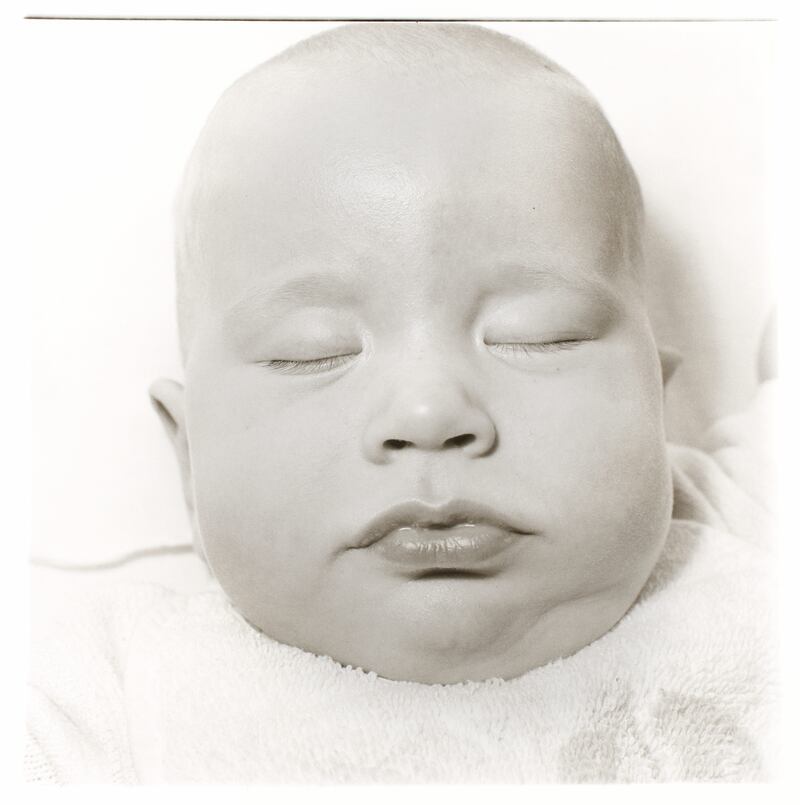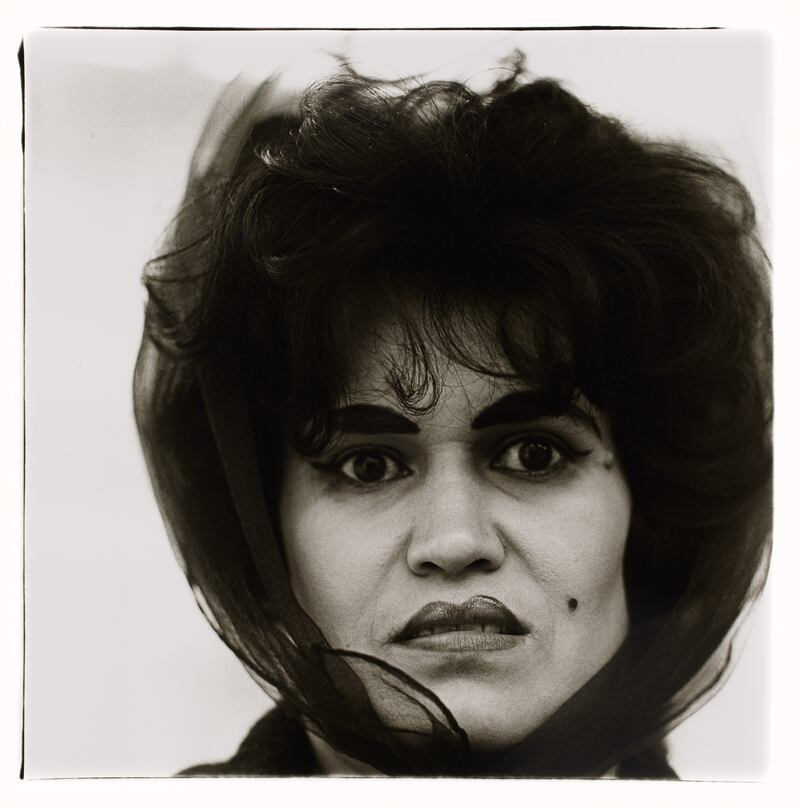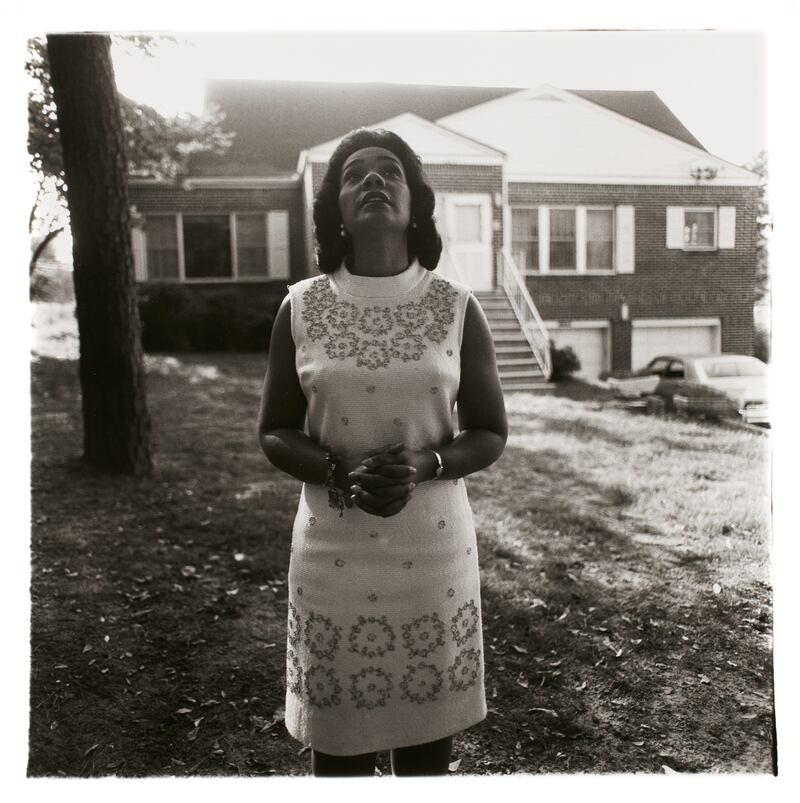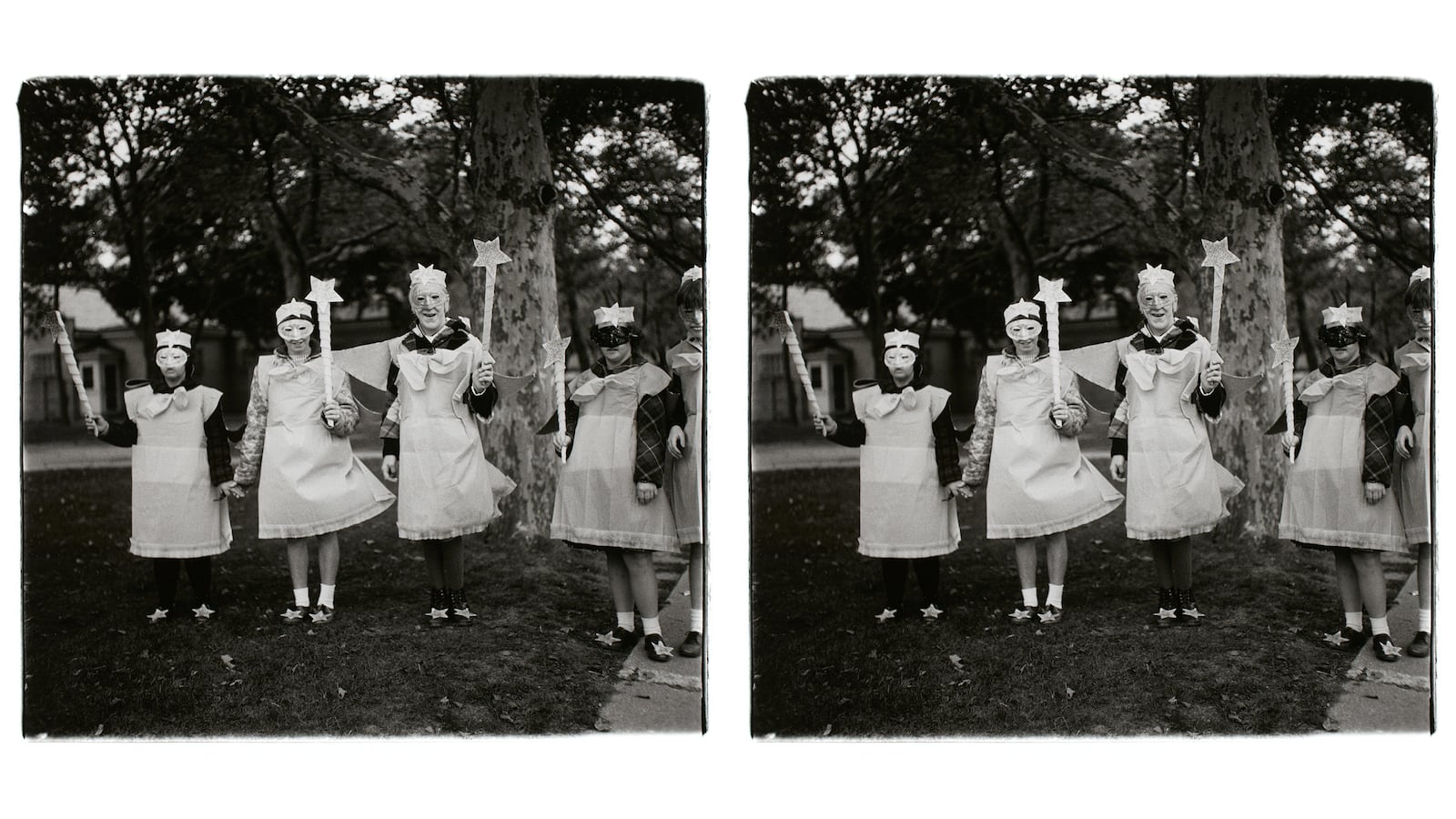The curator Sophie Hackett was standing near a carefully cooled vault in the Art Gallery of Ontario in Toronto, containing 522 of Diane Arbus’ photographs.
“I believe that it’s very, very difficult to talk about 20th-century art without talking about Diane Arbus smack in the middle of that,” Hackett said. “And I’m not just talking about the history of photography—I’m talking about art, period.”
Hackett led me towards a small number of Arbus pieces she had arranged for me to look at, all delicately slanted on a table, her eyes laying into them like Adam Sandler getting a look at precious stones in Uncut Gems.
In just a few days, the gallery would unveil Diane Arbus Photographs: 1956-1971. Cementing this as the second largest such collection of her photographs in the world, secured via a pool of private donors—second only after that of the Metropolitan Museum of Art in New York City—it is an exhibit that covers the gamut of an artist who famously made the mundane strange, and the strange, mundane.
The goal of the show, Hackett explained, was to keep as broad a curating focus as possible, while employing a rare chronological approach (showcasing Arbus in a way that shows her evolution as an artist). The show is bracketed between 1956, when the artist really dug into her craft—around the time she left the fashion photography business she ran with her husband—and 1971, the year she tragically took her own life.
“With a show, any show, you have to ask: what do you select, and why are you selecting it?” said Hackett. “With 522 images, and the roughly 158 we are showing, I initially thought: So 15 years of a career, what does it look like if we do it 10 per year...?”
It sloped from there, “going by the strength of the pictures, and also according to: Who she is photographing? Why she is photographing? 1962 and 1963 are particularly rich years, so I naturally drew more from those. I tend to be more internal about it. It is a very analog process, with little thumbnails, and pieces of tape, and moving things around. My cat sits on it. By the end of it, it is very crumpled because I carry it around a lot, on the subway, everywhere.”
Unsurprising, the first day of hanging for the show was revelatory. “It is always amazing to me how two inches makes a difference in how something hangs on a wall, and how one piece talks to another. The smaller pictures of hers have the experience of a book, even if they are hanging on the wall.”
Arbus famously photographed socialites and socialists alike, while also capturing cross-dressers, transgender people, nudists, and carnival sideshow artists. She also had a keenly colorful biography herself. Nicole Kidman played Arbus in the movie Fur, bringing to life the story of the woman born into New York privilege who became one of the most radical innovators of her craft. Her influence permeates culture; the creepy twins in The Shining were directly influenced by one of her images.
Arbus’ photographs, which her two daughters were confronted with, too, when they visited the show in Toronto, “elicit a range of emotions,” as Hackett explained. “She’s confronting us what what we think is beautiful, what we think is ugly, what we think should be seen, what we think shouldn’t be seen.”
Arbus also shot CNN anchor Anderson Cooper as a baby. Here sits one of the originals again, in all its scowling infant glory. “It's not cute—but Diane's work isn't cute,’’ is how Cooper reflected on the photos that Arbus took of him as a wee thing, when discussing them with Harper’s Bazaar in 2015, adding “I read one article where someone said the sleeping baby picture resembled a Roman death mask, which has always stuck with me.’’

Cooper's mother, socialite Gloria Vanderbilt, from New York social circles, had specifically asked Arbus take photos of her son, as a baby. The entire process took about three weeks, off and on, Arbus popping by the house to get in a shot here, a shot there.
His mom eventually acquired two of the photographs, and Cooper grew up with them, original copies both, framed and hanging with a note from the artist, in his living room. The CNN anchor was additionally given a copy of by Arbus’ daughter years later, and then he bought another at a gallery (as have many other celebrities over the years, including Elton John). “I saw a copy hanging in someone's house once, and I didn't know if I should point it out or not—it was one of those awkward things,’’ he mused to Bazaar.
The very first work one encounters in the Toronto exhibition is a full-length photo Arbus took of herself, pregnant, in 1945.
“It is a picture she took at home in front of a mirror with a tripod,” Hackett explained. “You see the tripod... and she took it when her husband was away. It is a portrait she sent to him.”

As both connoisseurs and Arbus-novices have found out, since the opening of the exhibition in the days that followed my meet with the curator, there has been much to chew on. There is the power of some of her most enduring works, such as the one dubbed “Puerto Rican Woman with Beauty Mark.”
The elegance of her portraiture is evident, as seen in the photographs of people like Christopher Isherwood and Mrs. Martin Luther King. We see the trajectory of her work itself, as demonstrated in the way she started off shooting with a 33mm camera, and later switched to using a medium-format Rolleiflex.

And finally, there are the revelations and mystery of all her subjects, including herself. As Arbus herself said, “A photograph is a secret about a secret: the more it tells you, the less you know.”
Diane Arbus: Photographs, 1956-1971 runs until May 18 at the Art Gallery of Ontario.






